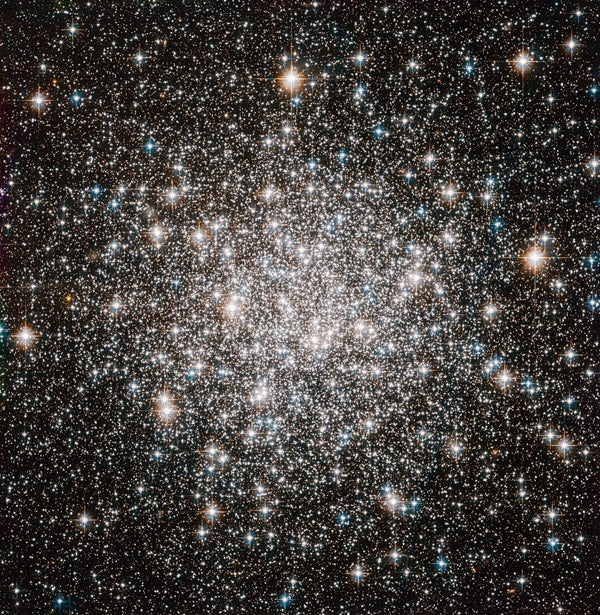Globular clusters are compact groups of up to a million or so stars held together by their mutual gravitational attraction, with a nearly spherical distribution and high density in the center. Our own galaxy has approximately 170 globular clusters separated into two subsystems associated with the galactic disk and halo. The movement of halo star clusters traces the galactic gravitational field at large scales, and their spatial distribution provides stringent constraints for models of dark matter distribution in the outer parts of the galaxy.
In a globular cluster, star motions are determined by the sum of the mass of all stars within the cluster. The cluster’s internal dynamics are also affected by its “relaxation time,” which is the time it takes for random encounters between stars to erase information about their initial orientation. For globular clusters, the average relaxation time is shorter than their age, so it can be argued that they are close to a relaxed state, like air molecules at room temperature. This is the physical reason why the orbits of member stars do not have a preferential orientation (i.e., their distribution is “isotropic”) around the center of mass of the cluster itself. This is even more pronounced in open clusters, which are typically smaller systems of only a few thousand stars.
Measuring the motions of the stars in a given globular cluster is beyond the capabilities of small telescopes. The European Space Agency’s Gaia observatory is currently measuring the positions and velocities of thousands of star clusters in our galaxy with unprecedented accuracy. This data, coupled with decades-long observational campaigns by the Hubble Space Telescope and other surveys (e.g., the Gaia-ESO survey, conducted with the Very Large Telescope in Chile), will soon enable us to study the distribution of globular clusters’ individual stars in position and velocity space. Stay tuned for the many interesting discoveries that will surely emerge!
Anna Lisa Varri
Marie Skłodowska-Curie Research Fellow,
Institute for Astronomy,
University of Edinburgh, Scotland










